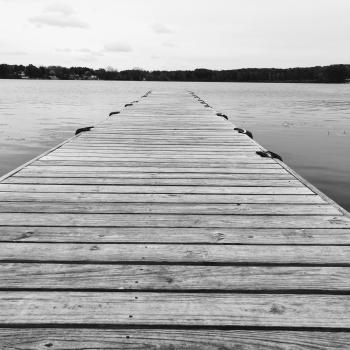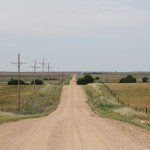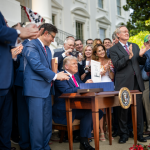
Here’s an interesting piece in the Washington Post in which reporter Christopher Ingraham sifts recent studies showing that while most people report that they would prefer to live in rural areas, a large majority of people in the U.S. live in urban or suburban areas. Ingraham cites compelling economic opportunities afforded by cities. Amazon’s new bi-urban headquarters to be located in the New York City suburbs and Washington, D.C. suburbs are Ingraham’s case in point. Economics of talent leverage economics of innovation leverage just plain old economics. To those who have much, much will be given.
But so too, as Ingraham points out, “happiness and well-being tend to be higher in rural areas than in urban ones.” And while there are some segments of rural America facing fierce economic headwinds, there’s also a whole lot of places in the Goldilocks Zone around big cities or nestled in lovely landscapes—or both—that are doing quite well. My central Kansas town of 1,800 boasts an unemployment rate of under 3%. You can buy a whole lot more house in rural Kansas than you can in Crystal City, Virginia. And you can keep chickens here.
So why aren’t folks flooding the big sky Great Plains, old school industrial Midwest, and beer and cheese rich upper Midwest?
There’s the usual factors of family ties and ending up where the jobs take us. But perhaps there is another, more subtle element at work. I suspect the clash of our culture’s rural narratives, the idealizing and disparaging. Rural is a construct, and when folks respond in surveys that they would like to live in a rural area, often they’re projecting a desire for basic human values of knowing and being known, neighborliness, community engagement, safety, and living closer to the earth. It’s an idealized vision of rural. None of these values are exclusively rural, but in Western mythology, rural is their caretaker. When we value these things, we claim to value rural.
So too, narratives disparaging rural life haunt our societal psyche. It’s the old “all roads lead to Rome” mentality that sees cities as the loci of cultural production and drivers of economic development. If you want to really make a difference, do something big, be somebody of stature, then get to a city. In this vision, rural is equated with left-behind backwater, and the Great Plains is better suited as a “buffalo commons” than a place fit for human beings. This recent article in the New York Times goes so far as to claim that vast acreages of depopulated plains are now being farmed by autonomous machinery, satellite-linked to distant drivers. (I’ll believe it when I see it). In any case, the claim represents the evolution of a slight: central continental is not just “flyover territory” but now features as a sort of Martian environment best engaged by rovers.
As people of Christian faith, when we subscribe to these narratives (the disparaging, but so too the idealizing in a roundabout way) we’re losing sight of the deep biblical conviction that God “did not create [the world] to be empty, but formed it to be inhabited” (Isaiah 45:18)–and those inhabitants are human beings. God intends a vast web of interconnected life with human beings at the center to steward and enjoy it (Genesis 2:15). The world–even the flat prairie parts–needs people for the world to be what it was purposed to be.
So too, the church is called to be present in all places, among all people (Acts 1:8; Matthew 24:14). That’s the church’s catholicity, and it’s a design feature, not a bug. The gospel diffuses outward into every corner of the world. Wherever there’s people, however spread out and sparse, the church is called to be there too.
Rural’s not going away. People still live in rural communities. And as Ingraham’s surveys point out, a lot of them they actually like it.












